2020 Project of the Year New Installation: Bakken Missouri River Crossing
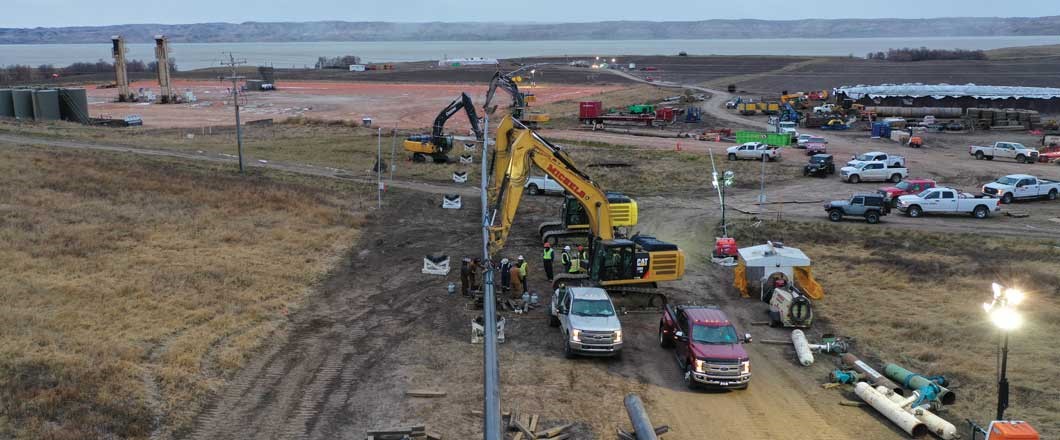
This incredible HDD crossing utilized the intersect method to cross Lake Sakakawea on the Missouri River to connect two ends of a 2.5-mile alignment — a 13,247-ft total crossing — using a 20-in. diameter pipe string and two custom-made drill rigs each with more than 1-million lbs of push/pull capacity.
This project provided a multitude of challenges for the contractor including a delayed start, steep entry and exit angles and a remote location to work in. Using HDD as the method of installation also eliminated the need to use a more costly alternative of having to divert hundreds of miles around the lake, thus saving project owner Kinder Morgan a substantial amount of money.
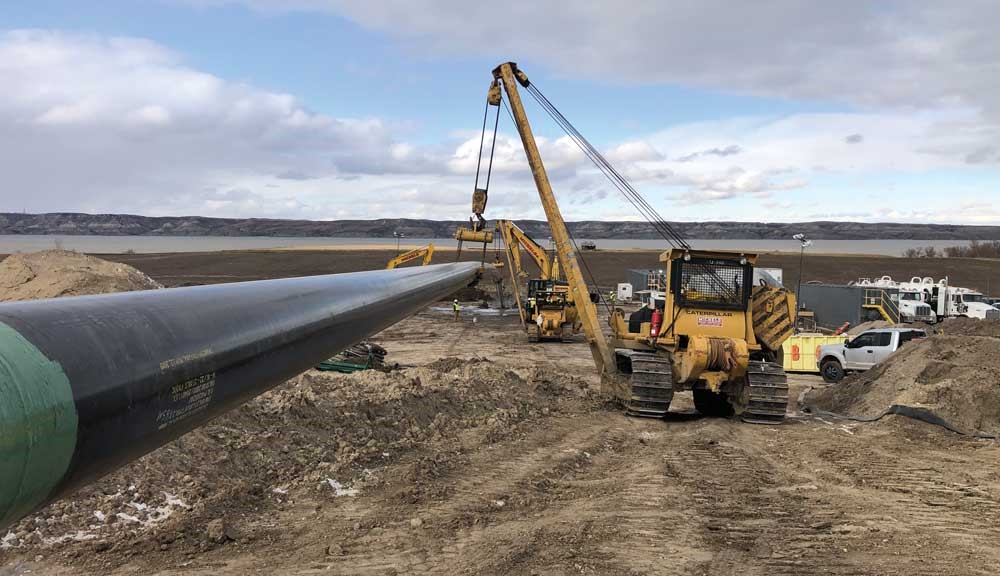
“Michels [Corp.] is routinely pushing the boundaries in developing new tools and ideas. We’re honored to have been selected the [Trenchless Technology] Project of the Year,” says Matt Smith, general manager of Michels’ HDD operations. “We can really use this as a benchmark to continue to push the industry forward, taking the techniques that are developed today and making them better for tomorrow.”
“[This project] opens the door to these longer crossings,” says Jeff Mueller, vice president of Michels HDD operations, as well as a 30-year veteran of the HDD industry. “We’ve crossed this particular body of water four or five times and all of those crossings have been over 10,000 ft. Our experience in that area as well as our ability to do these long crossings opens the door for a lot of gas and oil clients to look at doing longer drills in the future. [This project] is outstanding because it’s a milestone of a larger diameter that sets the stage for future work, in my mind.”
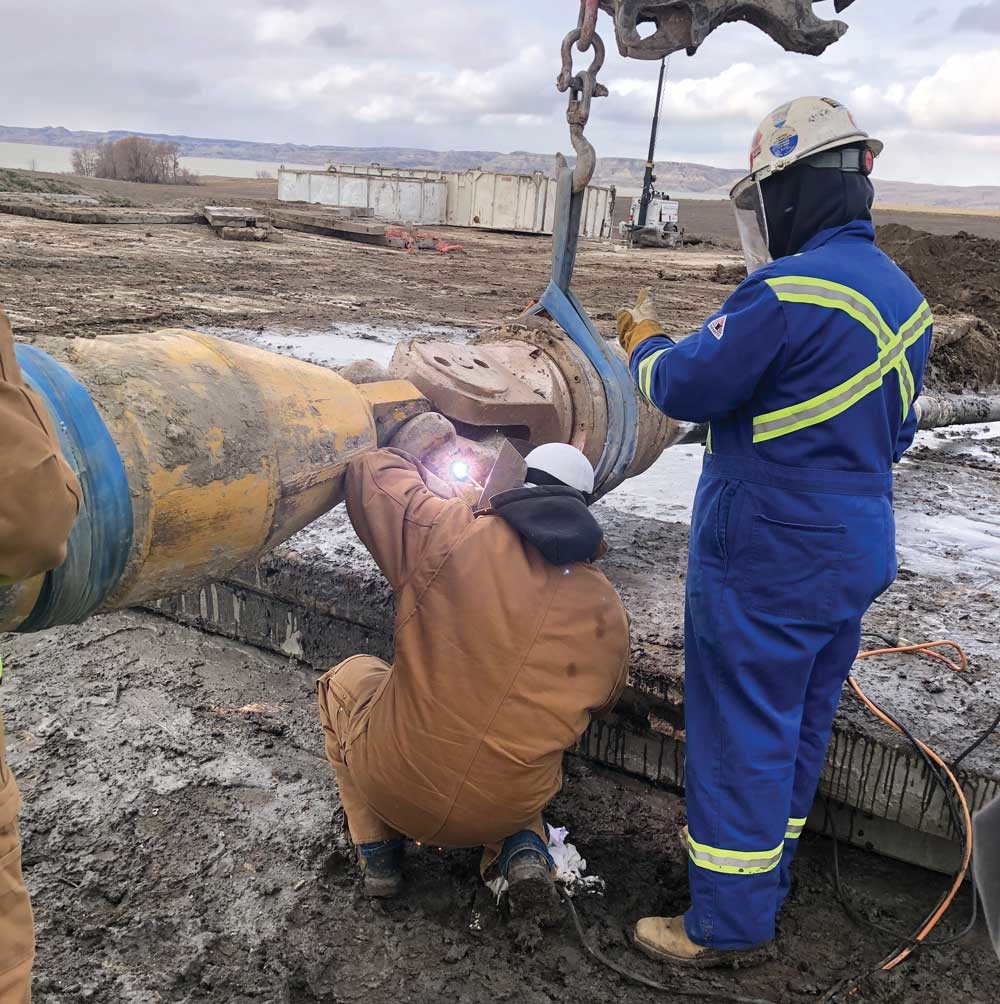
Crews prepared to drill through compacted clay, sand, rock and coal seams. Guided by gyroscopic tracking and downhole tools, the two pilot holes met almost exactly in the middle.
The project successfully culminated in October 2019 with a two-day pullback of the massive snake trail of pipeline welded in three strings by Michels pipeline construction crews, traversing the hills and valleys of the terrain adjacent to the lake.
A rig with 1.8-million lb push/pull capacity was positioned on the south side of the lake (entry side) and a rig with 1.2-million lb push/pull capacity on the north side. The 20-in. pipe string laydown area was 75 ft wide by 6,000 ft long, looking like a snake trail due to the vast undulating landscape.
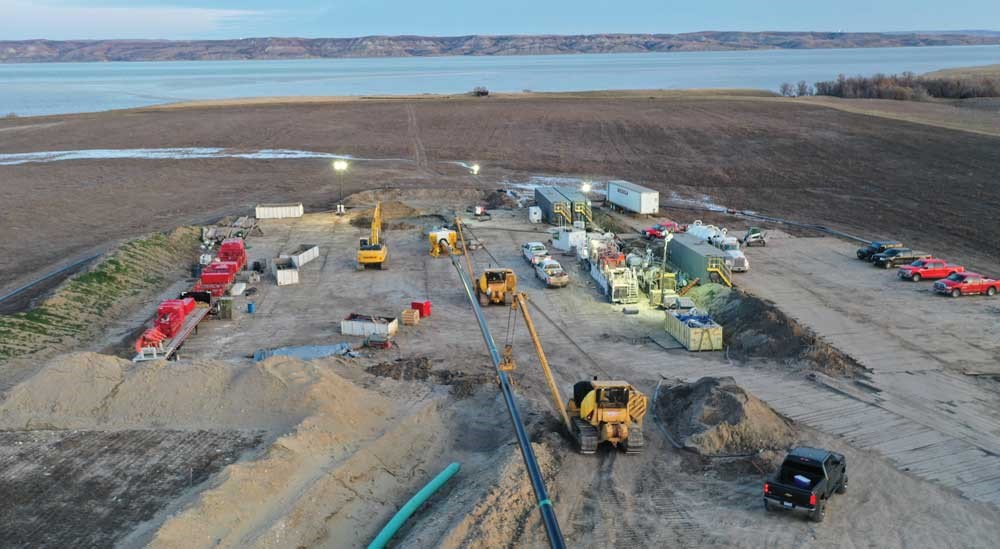
Project Background
Michels was contracted by Kinder Morgan for HDD and pipeline support to complete the 13,247-ft Bakken Missouri River Crossing (BMRC) under Lake Sakakawea on the Missouri River. In addition to its noteworthy length of 2.5 miles, this project provides a previously unavailable trenchless option for transporting natural gas without disturbing the lake bottom.
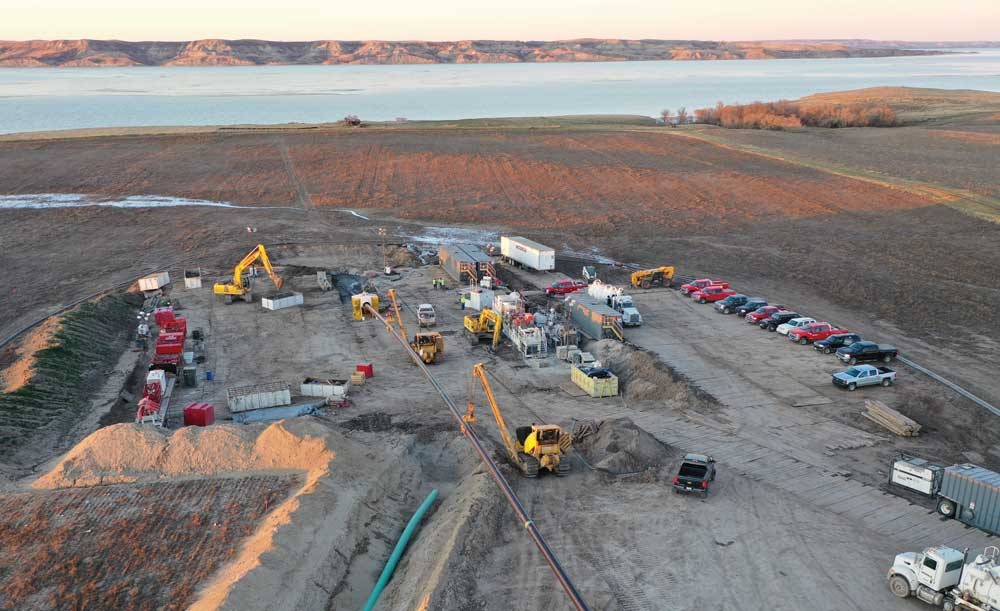
This project presented a number of challenges and obstacles along the way, including the overall length and diameter of pipe to be drilled in such a remote location — conditions not dealt with in their experience. “For this size pipe, there wasn’t anything or any experience we could glean on from our past projects,” says Smith, noting that Michels relied on the industry experience of its crew to complete the crossing.
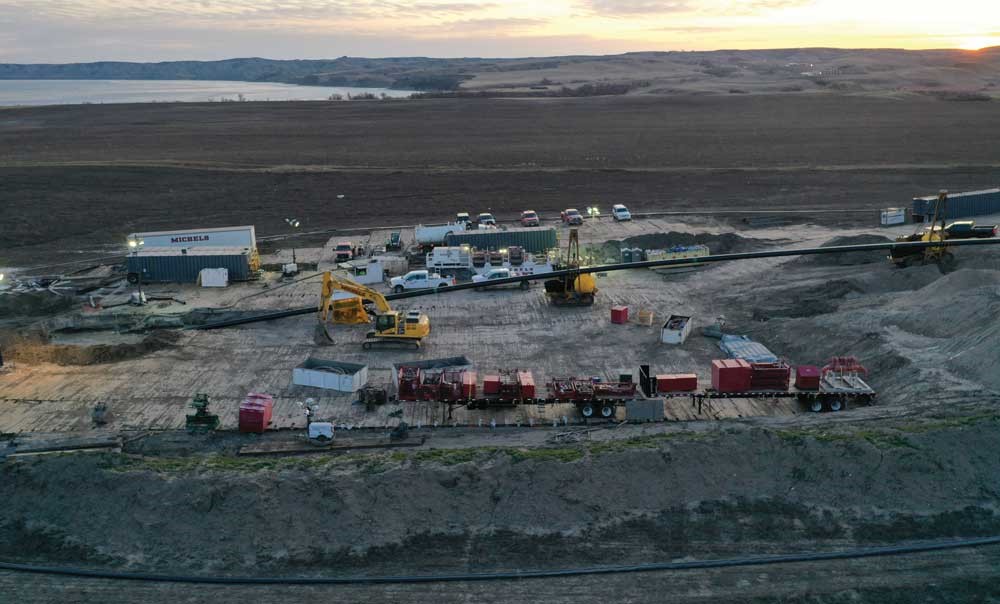
“We do work in remote locations all over the world and the United States,” Mueller says. “Our experience is that we know what to bring to these kinds of projects. You come prepared. You come with plenty of spare components and parts that you would typically see in a crossing of this length. Plenty of spare tooling and keep a spare steering tool onsite. On these types of projects, you don’t want to be waiting for a spare tool to show up.”
The crossing was performed in late August/early September 2019 to meet an environmental permit requirement banning activity taking place during the Dakota butterfly flight season. This pushed the schedule up against a tight window for completing it prior to the bitter cold winter months, which could wreak havoc on water-based drilling operations and pipeline testing procedures prior to pullback. Final pullback was completed in October 2019, during a minor snowstorm with frigid temperatures.
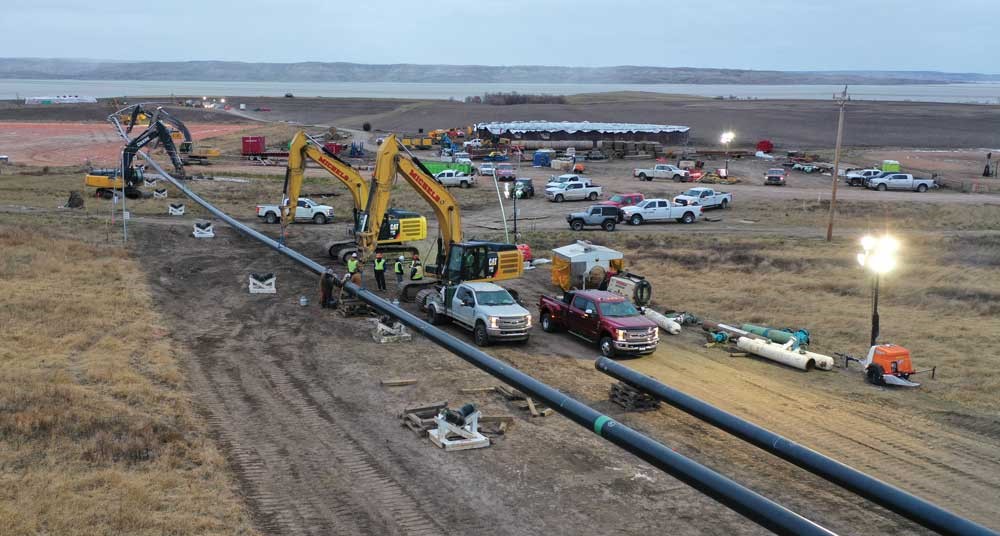
The Michels team used its engineered fluid program to mitigate any potential fluid losses into the formation.
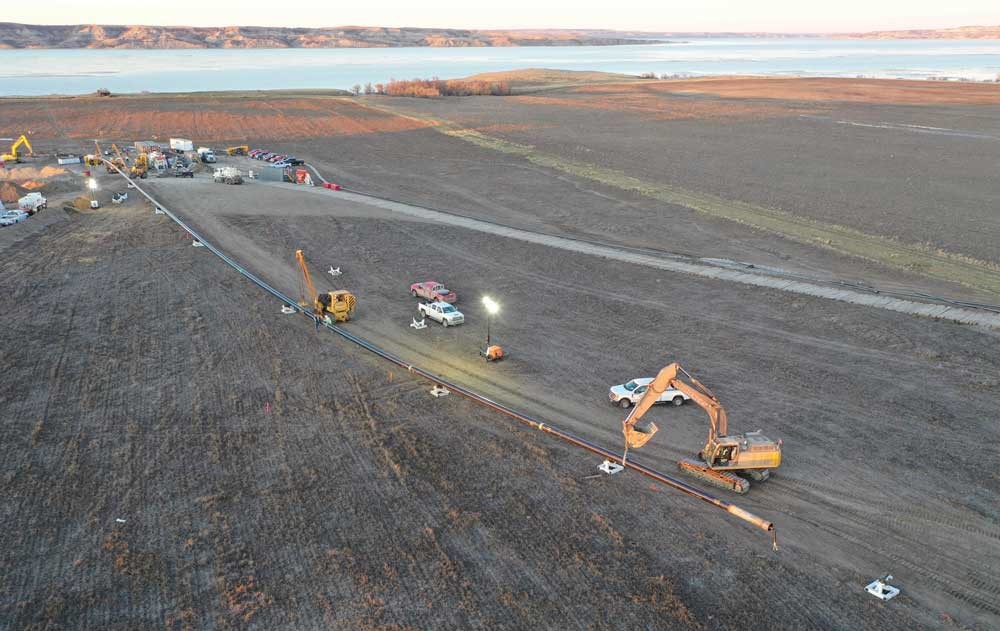
Michels’ specialized tooling and expertise in mud management planning allowed drilling fluid pressures to be maintained, resulting in the project being completed without any unplanned release of fluid.
Mueller marvels at how far the HDD industry has traveled since his introduction to it in 1989, when he started out doing 500-ft crossings with zero surface guidance. “We preform many significant projects every year,” he says. “We always want to push that envelope. That is the direction this market is going. There are large obstacles in the world that need to get crossed. If you can get an engineer to design these projects and can get a contractor that is willing to take the risk to perform it, it opens the world to a lot of future projects that two or three years ago would have been unachievable.”
Regulatory entities (including the U.S. Army Corps of Engineers) are placing more emphasis on proper HDD design including documentation to demonstrate that inadvertent return risks can be managed to avoid unwanted environmental issues associated with the loss of drilling fluids from an HDD bore during drilling operations.
Kinder Morgan retained the services of Mott MacDonald to perform a detailed design of the proposed HDD installation and provide recommendations for enhancing the success of the crossing. As part of this design work, Mott MacDonald performed a series of hydrofracture evaluations based on the anticipated geotechnical materials, site topography, and pilot bore drilling parameters. These evaluations helped to identify the required installation depth necessary to meet the requirements set forth by the USACE and establish the required drill and intersect zone for the installation. Mott MacDonald summarized their hydrofracture evaluations in a detailed white paper, which was instrumental in securing the USACE permit for this crossing.